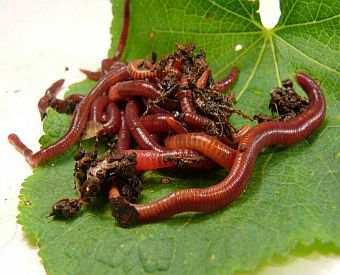Some Ideas on Red Wiggler Express You Need To Know
Some Ideas on Red Wiggler Express You Need To Know
Blog Article
Getting The Red Wiggler Express To Work
Table of ContentsThe Facts About Red Wiggler Express RevealedSome Ideas on Red Wiggler Express You Should KnowSome Ideas on Red Wiggler Express You Need To Know7 Easy Facts About Red Wiggler Express DescribedThe smart Trick of Red Wiggler Express That Nobody is DiscussingExamine This Report about Red Wiggler Express
Red wigglers and garden compost worms' favored foods are most fruits - they especially enjoy bananas, strawberries, raspberries, blueberries, peaches, and melons! Yes - however we advise feeding potato peels to worms in moderation (Worm Farms Near Me). Potato peels are starchy and do not break down quickly so they can take a while for the red wigglers to malfunction and consumeWe feed our worms at Brothers Worm Ranch twice a week, and a lot of us do the very same with our worm bins in the house. Red wigglers have a tendency to consume even more when temperatures are moderate (60-80 levels), so you might find a demand to feed them much more throughout these durations. If you are leaving for getaway or a trip and are fretted about your worms, there are a few things you can do to ensure their survival.
Simply adhere to these actions and your wiggly close friends should be fine while you're gone: Mix in fresh bed linen to the container. Bed linens can be the initial sort of bedding you utilized or a number of handfuls of shredded cardboard. Provide the surface area of the bed linens a hefty misting so the bedding doesn't dry out.
See This Report about Red Wiggler Express
Area an item of cardboard over the surface area of the bin (this will help it preserve dampness). If you are leaving for even more than 2 weeks, we recommend having a pal or household member feed and water the worms every 1.5 weeks while you are gone. You can leave food for the worms in the refrigerator and a tiny spray container for watering.
Thanks for reading and happy farming!.
Red worms are nature's supreme composting worm and a fantastic choice for worm farms. They're frequently called red wigglers, tiger worms, manure worms, composting worms, and the trout worms.
More About Red Wiggler Express


Red worms have many homes which make them perfect for the garden compost bin. Of all the worms suitable for worm farming the red worm is the most versatile and hearty.
Decaying fallen leaves, lawns, wood, and pet manure are all faves of red worms. The red worm's starved appetite makes it the champ of the garden compost bin and a virtual worm spreading (a.k.a. worm poop) devices. Red worms are fairly little, usually getting no bigger than 5 inches. However don't undervalue them.
A 24" x 24" worm bin can quickly house over 1000 red worms. For those interested in elevating lure worms it's good to keep in mind that congested red worms will certainly continue to be fairly skinny and short.
5 Easy Facts About Red Wiggler Express Shown
An additional advantage of red worms is their ability with stand a vast variety of temperature extremes. When the temperature dips red worms require to be safeguarded from freezing climate.
That can be as straightforward as maintaining them in trench loaded with aged manure and covered with straw or leaves. ; when temperatures increase keep your worm ranch cool. If your bed linen overcomes 85 degrees red worms will attempt to escape your containers for cooler areas. Give them with shade or if feasible relocation them right into your basement.
Like all worms red worms breathe oxygen with their skin. A wet environment likewise promotes the breakdown of organic matter in their bed linens material by microbial life forms.
A worm ranch filled with red wigglers is an outstanding means to compost food scraps, left overs, yard waste, and leaves. Feeding redworms is pretty simple, however there are some fundamental yet important things to bear in mind in order to maintain you worm farm healthy. In this section we will cover what you need to and should not be feeding your worms.
Excitement About Red Wiggler Express

However prior to leaving all the needed reproductive materials are scooped up right into the ring. When the mucus ring hands over the worm completion seals up, creating it to taper at one end, creating the familiar lemon shape of the cocoon. Over the next 20 days the cocoon darkens and sets.
If you don't feed them they will go trying to find food. Like all worms red worms take a breath oxygen via their skin. In order to breathe they call for a moist, but not saturated bedding material. A damp atmosphere likewise assists in the breakdown of organic matter in their bedding material by microbial life forms.
A worm ranch filled with red wigglers is an outstanding way to compost food scraps, left overs, garden waste, and leaves. Feeding redworms is pretty easy, but there are some basic yet important points to keep in mind in order to maintain you worm farm healthy. In this area we will cover what you must and should not be feeding your worms.
See This Report on Red Wiggler Express
Throughout mating worms slide along each other up until their clitellum are aligned. Throughout the breeding session, which lasts for regarding 3 hours, the worms secrete mucus rings around themselves.

Report this page